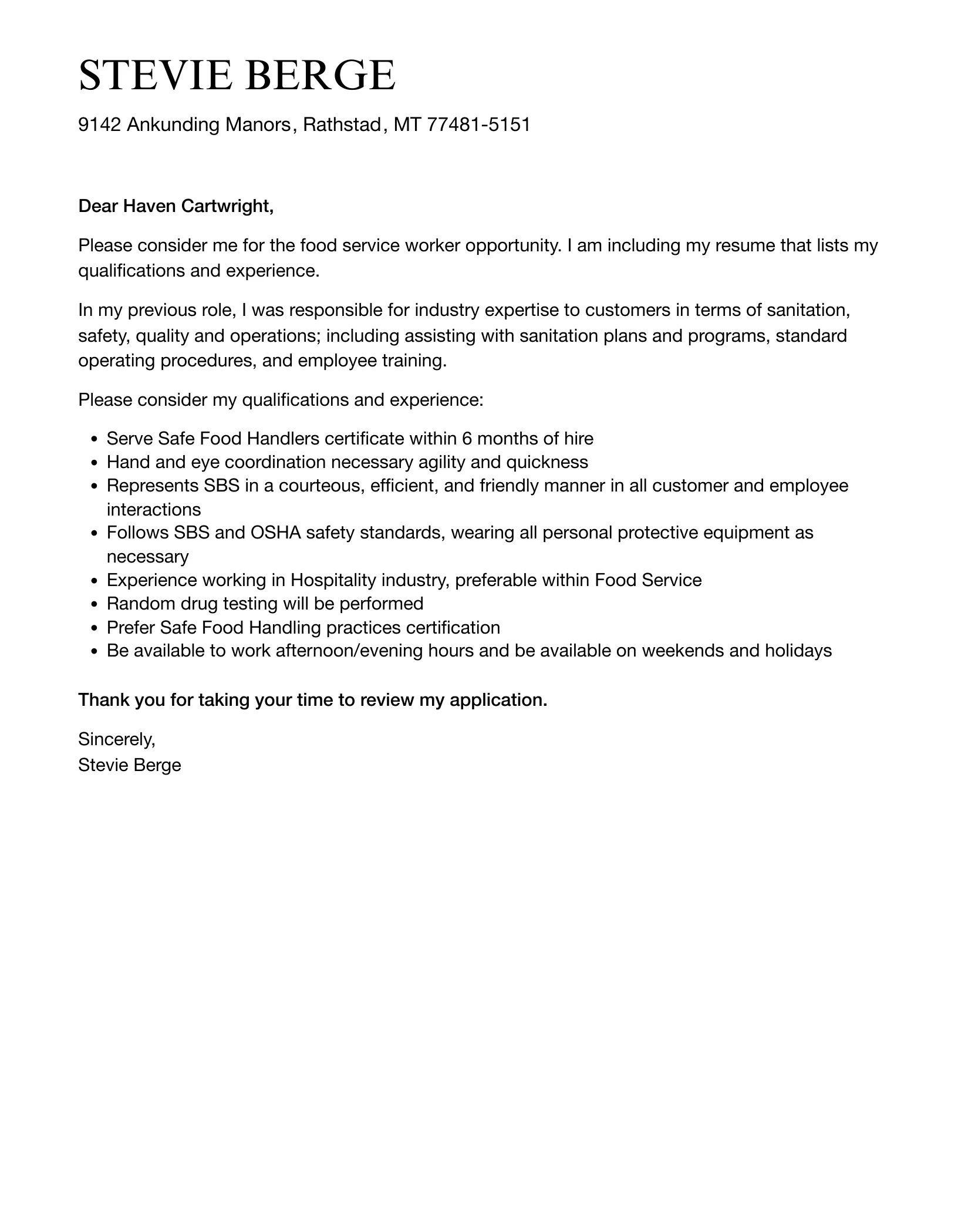Crafting a Food Service Cover Letter
A well-crafted cover letter is your first opportunity to make a positive impression on a potential employer in the competitive food service industry. It serves as an introduction, a showcase of your skills, and a means to express your enthusiasm for the position. This guide provides a comprehensive overview of how to create a compelling food service cover letter that increases your chances of landing an interview. We will explore the essential components, formatting tips, and common mistakes to avoid, along with sample scenarios to illustrate the best practices.
Understanding the Importance of a Cover Letter
In the fast-paced world of food service, a cover letter can be your secret weapon. It’s more than just a formality; it’s a vital tool that complements your resume by providing context, personality, and specific examples of your abilities. It is where you can explain why you’re the perfect fit for a particular restaurant, catering company, or other food service establishment. It’s a chance to demonstrate your understanding of the company’s needs and your genuine interest in the role.
Key Components of a Food Service Cover Letter
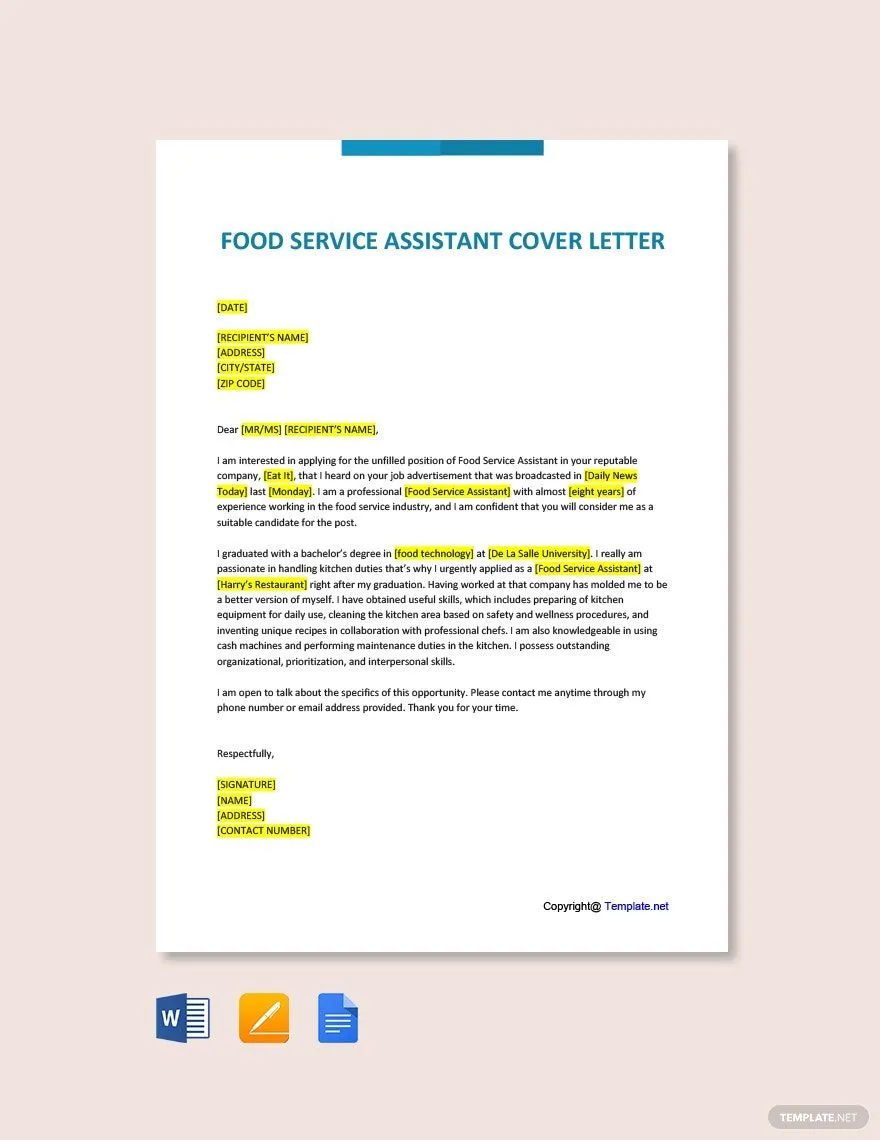
A strong food service cover letter contains several key elements that work together to create a persuasive argument for your candidacy. These components include proper contact information, a personalized salutation, a captivating opening paragraph, a detailed overview of your skills and experience, clear demonstration of your enthusiasm, and a strong closing that includes a call to action. Each section plays a crucial role in presenting you as the best candidate for the job.
Contact Information and Salutation
Start your cover letter with your full name, address, phone number, and email address. Following this, include the date and the hiring manager’s name, title, and the company’s address. Addressing the hiring manager directly shows that you’ve done your research and are attentive to detail. If the hiring manager’s name isn’t available, use a professional alternative, such as “Dear Hiring Manager.”
How to Address the Hiring Manager
Personalization is key. Finding the hiring manager’s name, even if it takes some research, shows initiative. Use “Dear Mr./Ms./Mx. [Last Name]” if possible. If you cannot find a specific name, opt for “Dear Hiring Manager” to maintain a professional tone. Avoid generic salutations like “To Whom It May Concern”.
The Opening Paragraph
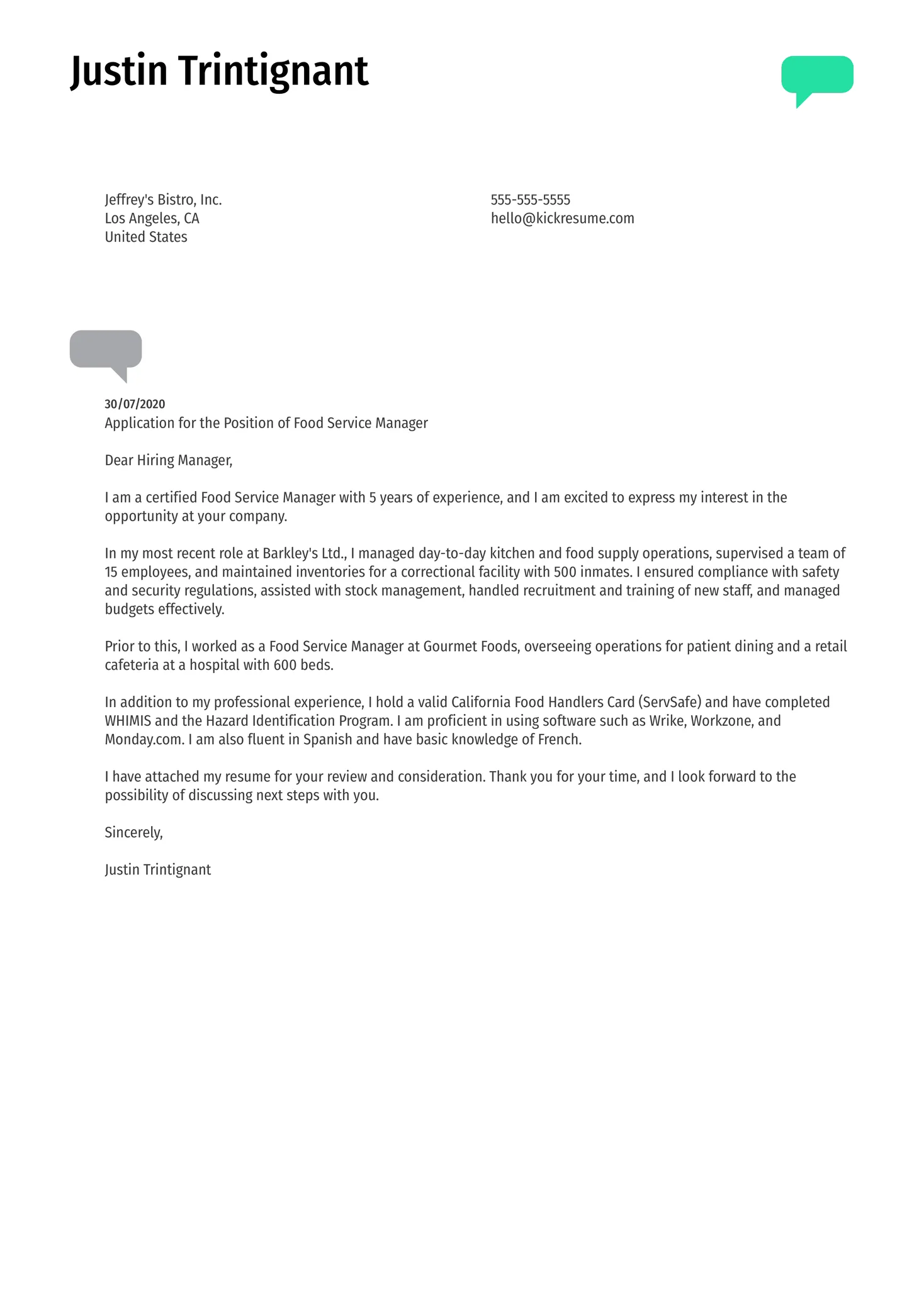
Your opening paragraph sets the tone. State the position you’re applying for and where you saw the job posting. Briefly mention your key skills or experience to grab the reader’s attention. For example, “I am writing to express my interest in the Server position at [Restaurant Name], as advertised on [Platform]. With five years of experience in customer service and a passion for creating positive dining experiences, I am confident I can contribute to your team.”
Highlighting Your Skills and Experience
This is where you provide the meat of your cover letter. This section should highlight the relevant skills and experience you have that align with the job requirements. Avoid simply restating your resume; instead, elaborate on your accomplishments and what you can bring to the table. Focus on the skills listed in the job description and how you’ve utilized them effectively in previous roles.
Showcasing Relevant Experience
Detail your previous food service experiences, focusing on roles and responsibilities that align with the job you’re applying for. Mention specific accomplishments, such as successfully managing a busy section, improving customer satisfaction scores, or efficiently handling food preparation. Use action verbs to describe your duties and responsibilities.
Quantifying Your Achievements
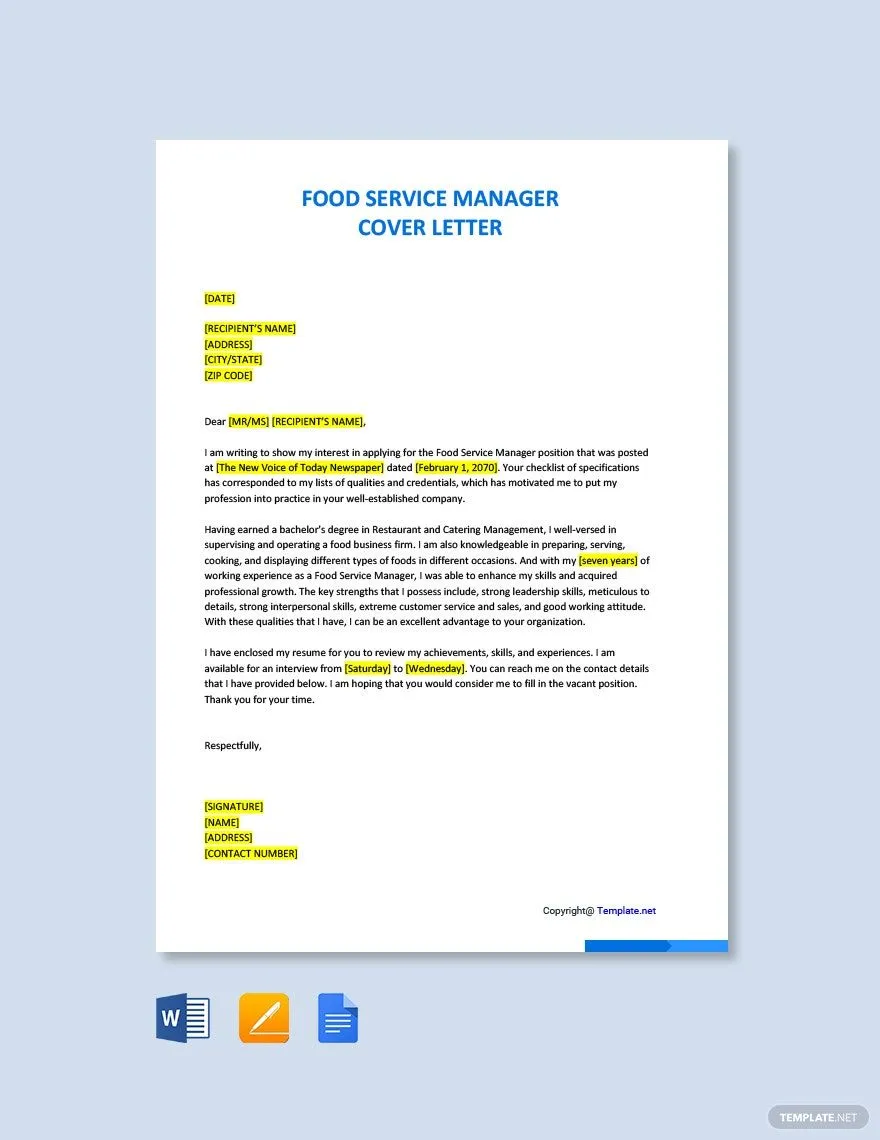
Whenever possible, quantify your achievements. Use numbers and data to demonstrate your impact in previous roles. For example, “Increased table turnover by 15%” or “Trained a team of 10 new kitchen staff members.” Quantifiable achievements make your accomplishments more credible and impactful.
Focusing on Soft Skills
Food service is heavily reliant on soft skills like communication, teamwork, problem-solving, and adaptability. Emphasize these skills by providing examples of how you’ve used them in previous roles. For instance, “Successfully resolved customer complaints in a timely and professional manner, resulting in positive feedback and repeat business.”
Demonstrating Enthusiasm for the Role
Show your genuine interest in the role and the company. Mention why you’re drawn to the position or the restaurant. Briefly describe your understanding of the restaurant’s values or the types of cuisines they serve. This will show the hiring manager that you are not just applying for any job but are genuinely interested in the opportunity.
Tailoring Your Cover Letter
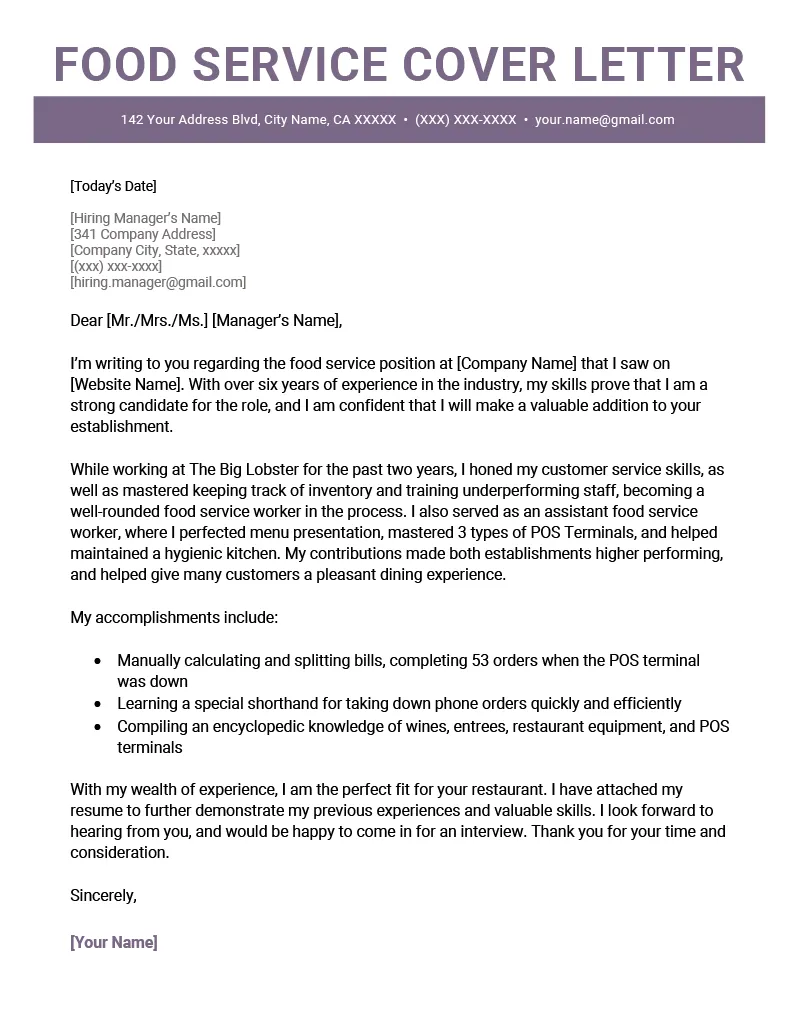
A generic cover letter is easily spotted and often discarded. Tailor your cover letter to each job application by carefully reading the job description and adjusting your letter to match the specific requirements and expectations. This personalization shows the hiring manager that you’re serious about the position.
Researching the Company
Before writing your cover letter, research the company. Visit their website, social media pages, and any online reviews. Understanding their culture, values, and mission will enable you to tailor your letter to showcase why you are a good fit. Mentioning specific aspects of the company that appeal to you shows that you have taken the time to learn about the organization.
Using Keywords from the Job Description
Carefully review the job description and identify keywords related to the required skills, experience, and responsibilities. Incorporate these keywords naturally into your cover letter. This helps to demonstrate that you meet the job’s requirements and may also help your application get noticed by Applicant Tracking Systems (ATS).
Proofreading and Editing
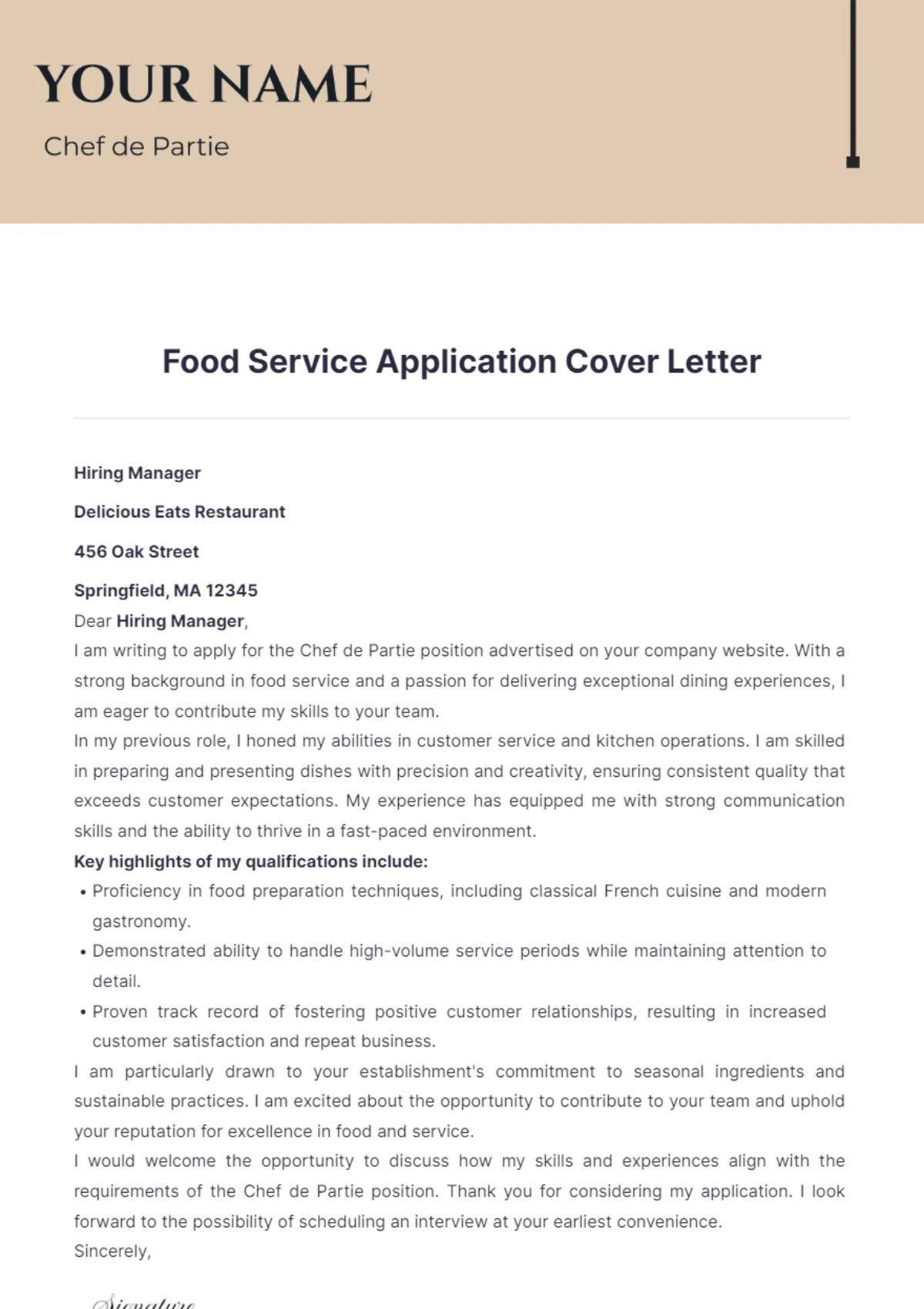
Once your cover letter is written, proofread it carefully for any errors in grammar, spelling, and punctuation. Consider asking a friend or family member to review your letter as well. A polished cover letter reflects professionalism and attention to detail, both crucial in the food service industry.
Formatting Your Cover Letter
Formatting plays a significant role in making your cover letter easy to read and visually appealing. A well-formatted letter ensures that the hiring manager can quickly find the information they need. This section provides guidance on the best formatting practices.
Choosing the Right Font and Style
Select a professional and easy-to-read font, such as Times New Roman, Arial, or Calibri. Use a font size between 10 and 12 points. Ensure consistent formatting throughout your letter, including the use of bolding, italics, and underlining, but use them sparingly and strategically for emphasis.
Keeping It Concise and Professional
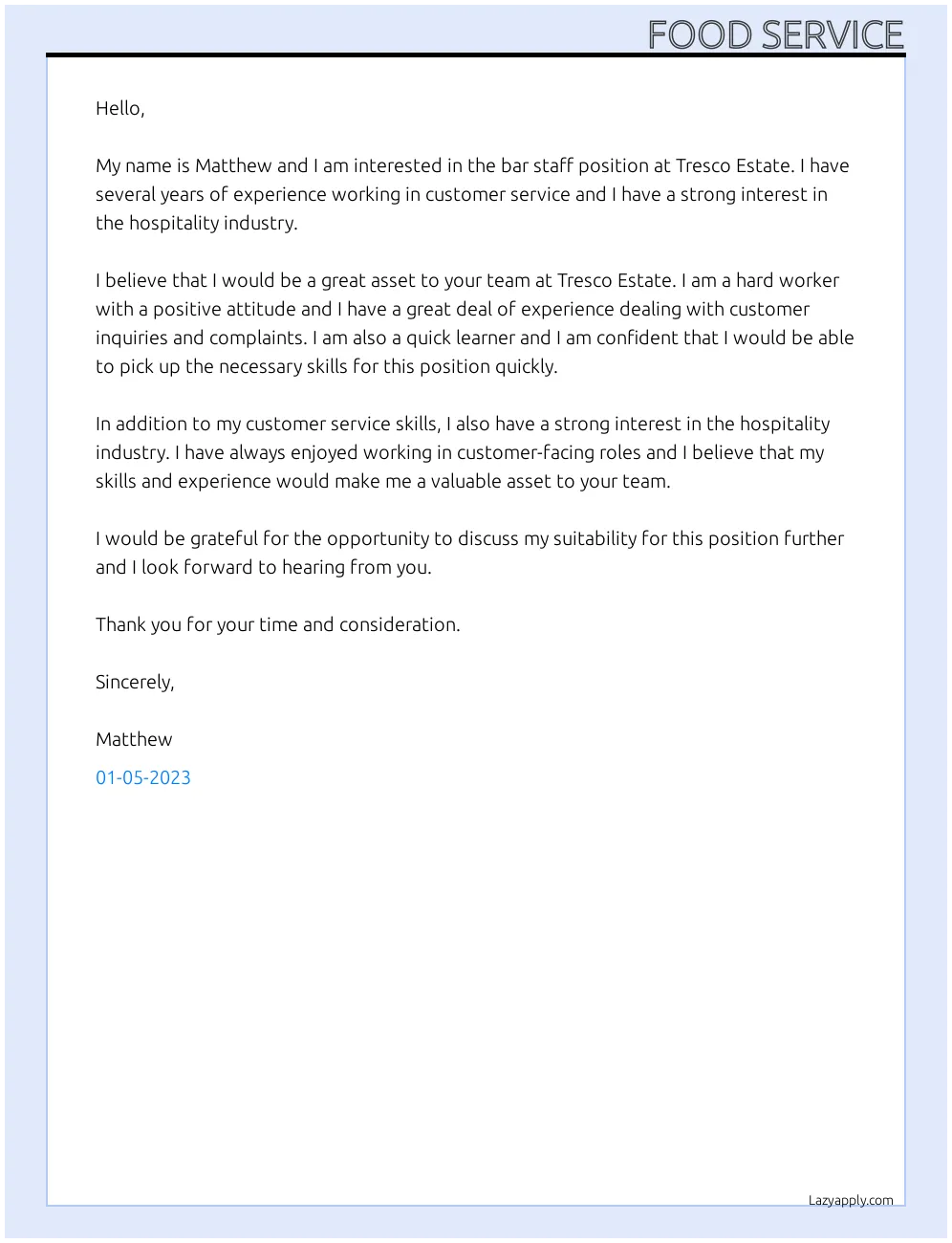
Keep your cover letter to one page. Focus on the most relevant information and avoid unnecessary details. Maintain a professional tone throughout the letter. Use formal language, avoid slang, and refrain from being overly casual or informal.
Writing a Strong Closing
Your closing paragraph should summarize your interest, reiterate your qualifications, and express your gratitude. It’s also your opportunity to provide a call to action to the hiring manager. This will make you stand out and encourage them to follow through with the next step.
Expressing Gratitude and Next Steps
Thank the hiring manager for their time and consideration. Express your eagerness to discuss your qualifications further. Include a call to action, such as “I look forward to the opportunity to discuss my qualifications further in an interview” or “I am available for an interview at your earliest convenience.” Provide your contact information again for easy reference.
Food Service Cover Letter Samples
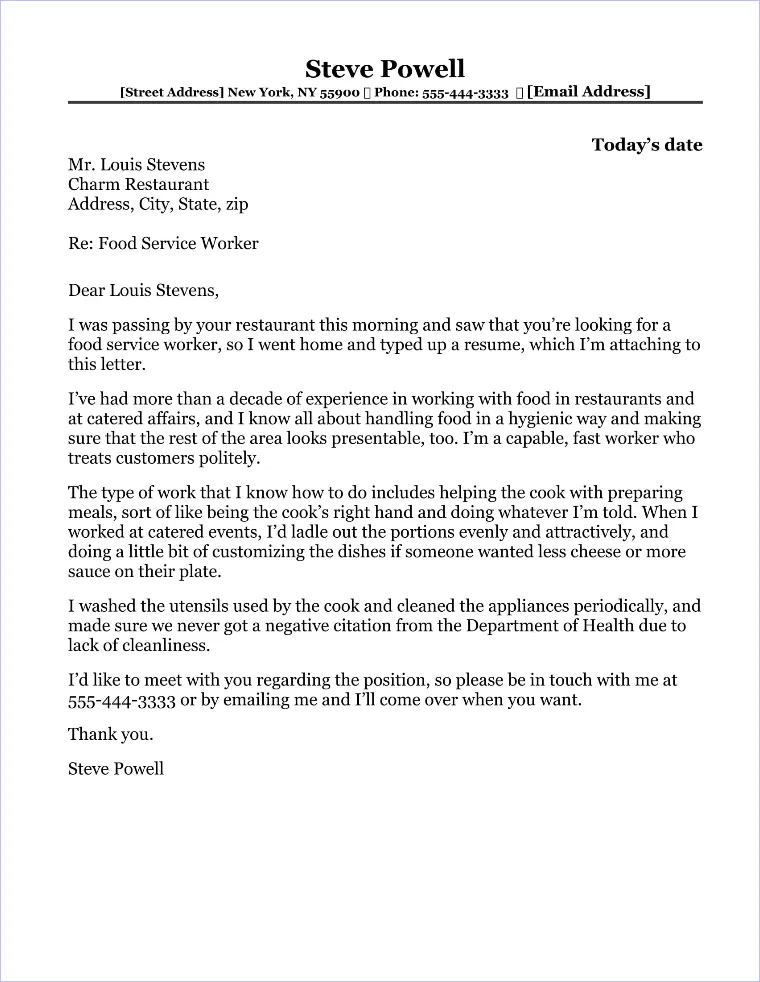
Reviewing samples can provide a helpful template to use when crafting your own cover letter. Here are some examples for various roles in the food service industry. These can give you ideas on how to showcase your skills.
Sample 1 Kitchen Staff
A cover letter for a kitchen staff position should highlight experience with food preparation, sanitation, and teamwork. Emphasize your ability to follow recipes, work in a fast-paced environment, and maintain cleanliness in the kitchen.
Sample 2 Restaurant Server
A restaurant server cover letter should focus on customer service skills, order accuracy, and the ability to handle multiple tasks efficiently. Highlight your communication skills, ability to resolve conflicts, and experience with point-of-sale (POS) systems.
Sample 3 Catering Assistant
A catering assistant cover letter should showcase experience with event setup, food handling, and customer service. Emphasize your organizational skills, ability to work under pressure, and attention to detail. Highlight any experience with large-scale catering events.
Common Mistakes to Avoid
Certain mistakes can undermine your application. Avoiding them can significantly improve your chances of getting hired. Some common errors include generic language, typos, and displaying negativity.
Generic Cover Letters
Avoid using a generic cover letter that isn’t tailored to the specific job or company. Generic letters fail to show the hiring manager why you are a good fit for the position. Tailor your letter to each job application by highlighting the skills and experiences that align with the job description.
Typos and Grammatical Errors
Carelessly written cover letters containing typos or grammatical errors reflect poorly on your attention to detail. Always proofread your letter carefully before submitting it. Use a grammar and spell-checker, and consider asking a friend to review your letter as well.
Negativity and Unprofessional Tone
Maintain a positive and professional tone throughout your cover letter. Avoid expressing negativity about previous employers or jobs. Focus on your skills, achievements, and enthusiasm for the new opportunity.
Finalizing and Submitting Your Cover Letter
Once you have written, edited, and proofread your cover letter, the final step is to prepare it for submission. Ensure that the format is correct, and that the document is ready to be delivered in a professional manner.
Saving Your Cover Letter
Save your cover letter in a format that is easily accessible by all hiring managers, such as a PDF. This will ensure that your formatting remains consistent and professional. Use a clear and descriptive file name (e.g., “[Your Name] - Cover Letter - [Position]”).
Submitting via Email or Online Portals
Follow the instructions provided in the job posting regarding how to submit your application. If submitting via email, include a brief, professional subject line (e.g., “Application for Server Position - [Your Name]”). Attach your cover letter and resume as separate documents. If submitting through an online portal, ensure that you follow all guidelines carefully.
